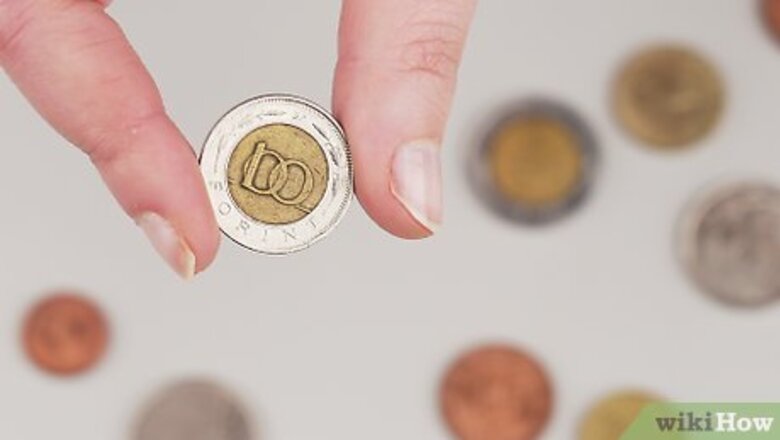
views
Cleaning Quarters
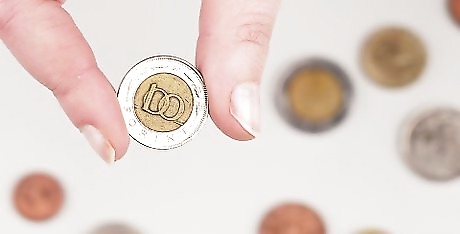
Make sure your quarter is not valued by collectors. This is especially important if you plan on selling or trading your quarter later. Many collectors find tarnish desirable. Cleaning collectible quarters can decrease their value greatly. Because of this, it is best to leave old, valuable quarters alone. Some collector's quarters can be worth up to $400, if not more.
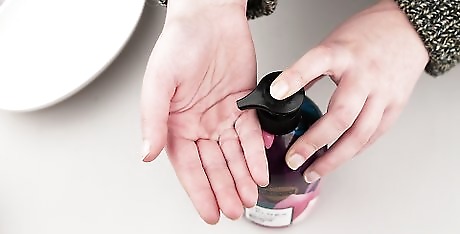
Wash your hands with soap and warm water. to remove any grit and oils from your fingers. Prepare your working area by laying down several layers of thick towels flat across the surface. This will provide a soft landing place for any quarters that you might drop, as well as an area for them to dry on.
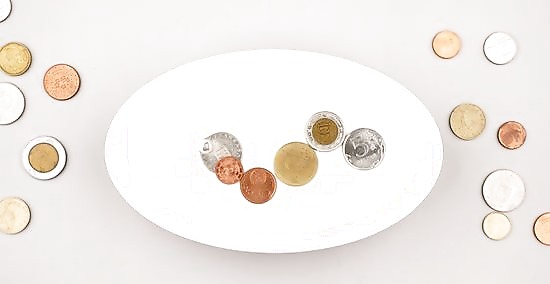
Soak the quarter in very hot water. Fill a plastic container with very hot water and dip the quarter inside. Do not use metal, glass, or china because their hard finishes will scratch your quarters. Metal containers may also react with the surface of the quarter. You can also hold the quarter under running hot water, but make sure that you have the drain covered. Hold the quarter by the edges, between your thumb and forefinger. If you are soaking more than one quarter at a time, make sure that there is enough space between each one. If they are all touching, they are more likely to get scratched or dinged. Check the dates of the quarters to avoid soaking two different kinds of metals together. Quarters minted in 1964 and earlier were made mostly from silver. Quarters minted in 1965 and after were made from copper and nickel.
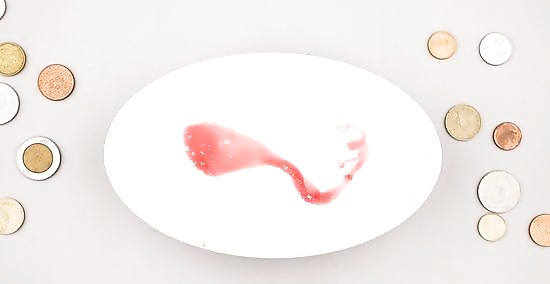
Soak the quarter in a plastic container filled with warm, soapy water. Fill a plastic container with 1 tablespoon of dish soap and 2 cups (475 milliliters) of warm water. Stir just enough to mix the two together but not so much that you get suds. Place the quarter into the water, and leave it there for several hours. The soap will help loosen any dirt. If you are soaking more than one quarter at a time, make sure that there is enough space between them.
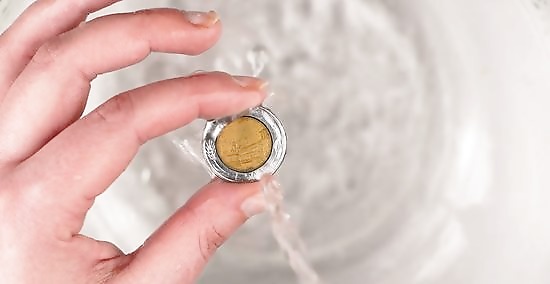
Rinse the coin with warm running water. Hold the quarter by the edges, between your thumb and forefinger. Make sure that the drain is covered, in case you drop the quarter. If the dirt is stubborn, you can very gently rub it off using your fingertip or a soft bristled toothbrush (such as a baby toothbrush). Work in an outward direction, from the center of the coin to its edges, until the dirt is gone. If the dirt is very gritty, do not rub it off. The tiny particles may scratch the surface of the quarter. Instead, consider soaking the quarter in the soapy water for longer. You can also move the quarter around under the running water to dislodge the grit.
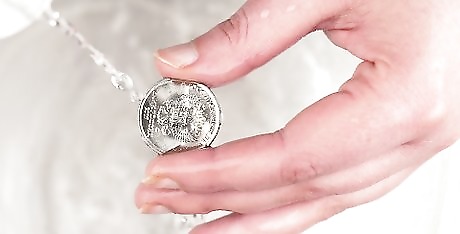
Rinse the quarter with distilled water. Fill a plastic container with distilled water. Dip the quarter into the water, swish it around, and lift it out. Running tap water is great at dislodging dirt, but it often contains minerals that may cause water spots. Distilled water is pure, and does not container these minerals.
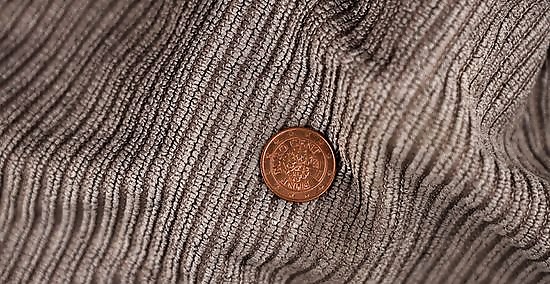
Dry the quarter. Gently pat the quarter dry with a clean, soft, dry cloth. Be very careful not to rub the coin. Try to use a lint-free cloth, such as microfiber. You can also dry the quarter by wrapping some tissue around it, then placing it between the pages of a book. Close the book, open it, then take the quarter out.
Cleaning Quarters in Other Ways
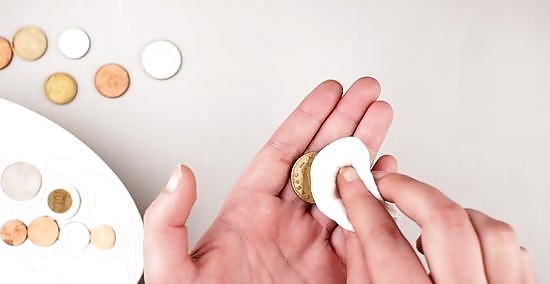
Use acetone to remove sticky residue. You can use pure acetone or nail polish remover. For light residue, soak a cotton ball with acetone, and wipe the surface of the quarter until the stickiness is gone. For more stubborn residue, pour some acetone into a glass cup and leave the quarter in there for up to 24 hours. Remove the quarter, then dry it off with a tissue. Acetone works on tape residue as well as gunked up ink, tar, and glue. You must use a glass container. Do not use metal or plastic. Metal which can react with the quarter and ruin it. Plastic can be corroded or melted by the acetone.
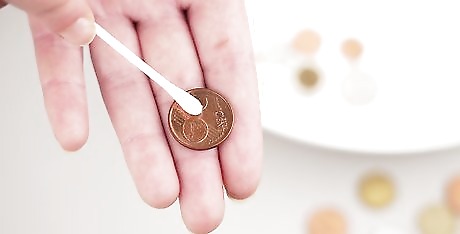
Use ammonia to lighten up quarters. If you are collecting quarters that you plan on having as part of a set, such as the State quarters, consider lightening them with ammonia. This was, they will all match. To do this, soak a cotton ball with some ammonia, and wipe the surface of each quarter. This works only on quarters that are mostly clean. If your quarter is very dirty, consider cleaning it with some soap and water. Ammonia can also remove green tarnish. Get plain ammonia from the grocery store. Avoid using ammonia-based household cleaning products. They tend to be too harsh for quarters.
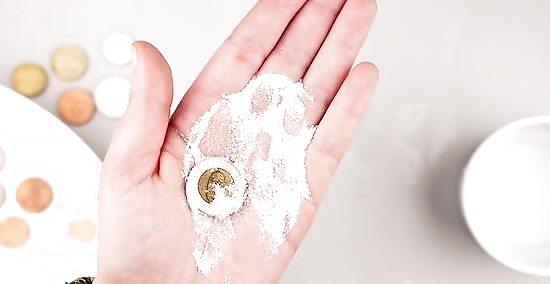
Use baking soda and water as a last resort. Pour some baking soda into the palm of your hand. Dip the quarter you want to clean in water, then place it into the baking soda. Roll it around and flip it over. Use your fingers to rub the baking soda across the surface of the quarter. Rinse the baking soda off with distilled water. Repeat this step, if necessary. Baking soda is effective, but it is also very harsh. It can create tiny scratches that collectors and dealers will notice upon inspection. Do not use this on valuable, collectible quarters.
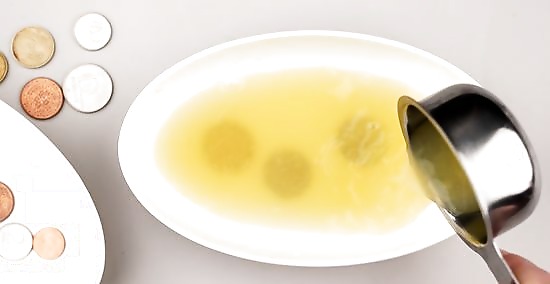
Soak your quarters in lemon juice. Place the quarter you want to clean into a small plastic bowl. Fill the bowl with enough lemon juice to cover the quarter. Wait a few minutes, then check on the quarter. If the quarter is clean, rinse it off with distilled water. If the quarter is still dirty, let it soak for a few more minutes. Once you have the quarter rinsed off, pat it dry with a tissue.
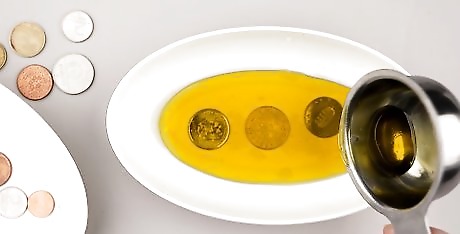
Soak quarters in olive oil. Place the quarter you want to clean in a small plastic bowl. Fill the bowl with just enough olive oil to cover it. Olive oil is very gentle, but it takes a long time for it to work. Check on the quarter after several hours. If you want, you can gently rub the surface with your fingers to dislodge any surface dirt. Rinse the quarter off with dish soap and warm water, then give it a final rinse with distilled water. Pat it dry with a tissue.
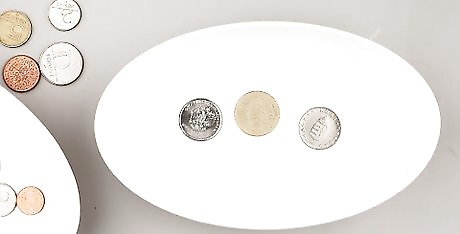
Soak quarters in rubbing alcohol. Place the quarters you want to clean into a small plastic bowl. Fill the bowl with just enough rubbing alcohol to cover the quarters. Wait a few hours, then check on the quarters. If they are still dirty, let them soak for a few more hours. If they are clean, take them out of the rubbing alcohol bath and pat them dry with a tissue.
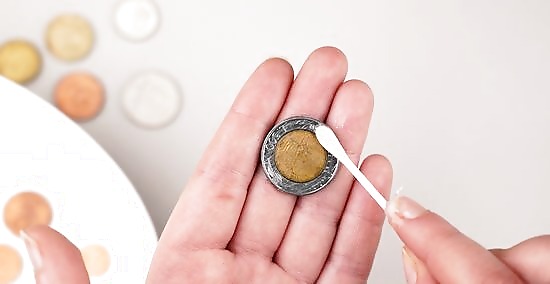
Use Vaseline or petroleum jelly to remove dirt from quarters. Dip a Q-tip into some Vaseline. Apply the Vaseline to the face of the quarter, then wipe it off with a clean Q-tip. Keep doing this until the quarter is clean, then repeat for the other side. Once the quarter is clean, wipe it off with lint-free fabric, such as microfiber.
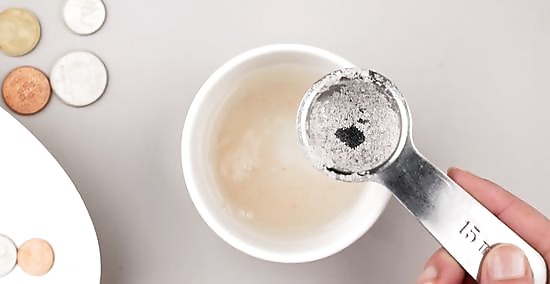
Soak dirty quarters in a solution made from vinegar and salt. Fill a small, glass bowl with 1 cup (240 milliliters) of white vinegar and 2 tablespoons of salt. Stir the solution to mix, then add the quarters. Leave the quarters there for several hours to overnight. When they are clean, take them out and rinse them off using distilled water. Gently pat them dry with a tissue.
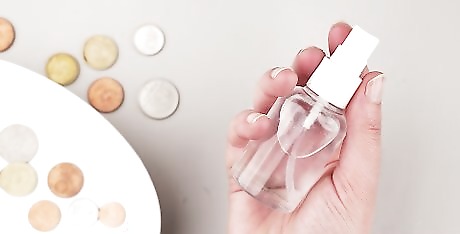
Know what to avoid. There are some cleaning agents that should be avoided, mostly because they can permanently mar the surface of the quarter. Listed below are several cleaning agents that you should avoid when cleaning quarters, and why: Chlorine, bleach, porcelain cleaners, and other cleaning acids can corrode and darken the surface. Do not use silver dip or silver polish. They tend to be too abrasive and can scratch up the coin's surface. This is especially important for quarters minted in 1964 and earlier. These are made from almost pure silver.

















Comments
0 comment